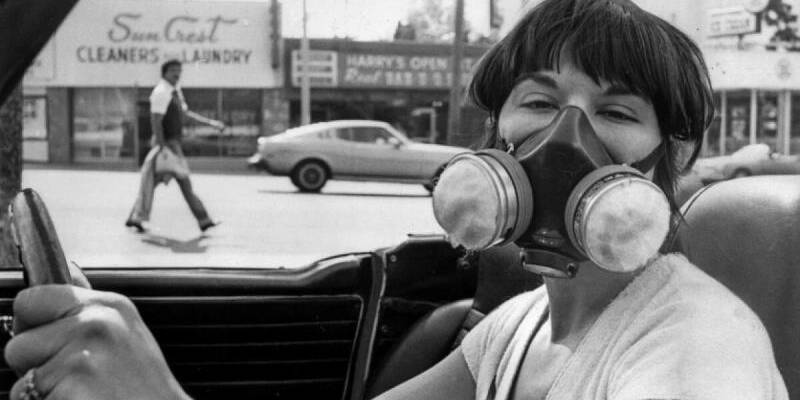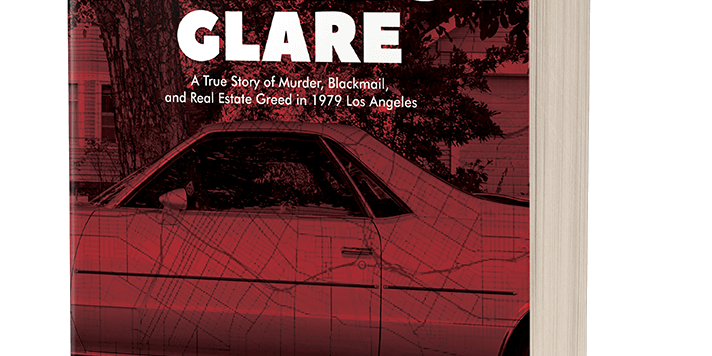
In its war on blight, the Los Angeles redevelopment agency has amassed a troubled loan portfolio with a nearly 20 percent default rate – and almost $317 million in loans that won’t be paid back for years, if ever, records show.
Because of defaults and uncertain payback, loans made by the agency to nonprofit housing developers and other borrowers are considered so risky that they would fetch just seven cents on the dollar if sold.
By not better managing its $452 million portfolio, critics say, the Community Redevelopment Agency is squandering taxpayer dollars and depriving residents of a way to finance badly needed urban improvements.
In an interview Friday, Mayor Richard Riordan said the loans raise questions about the agency’s past financial management.
“I am worried about the defaults, because I think they are a symptom of what has been done in the past,” Riordan said. “In the future, you have to go into each project with your eyes wide open and determine how likely you are to get repayments.”
Perhaps America’s wealthiest urban renewal organization, the CRA had $81 million in failed loans as of Sept. 30. Because of the weak economy, agency officials estimate up to half their entire portfolio could wind up in default – a predicament that would saddle the city with tremendous losses.
The projects in default span the CRA’s 26 redevelopment and revitalization zones, records show.
They include downtown condominiums and a trendy nightclub, vintage office towers, homeowner loans and a slew of affordable housing complexes.
Even a new housing project named after the now-deceased redevelopment champion, City Councilman Gilbert Lindsay, is in default on a $4 million deal.
Defending their track record, agency brass say they are working to improve their repayment system, but loan collection is not their top priority.
It’s the low-income apartments, revitalized cultural and commercial strongholds and other social objectives bolstered by CRA loan muscle that CRA administrators consider paramount.
“We make loans the banks won’t make,” said Peirre Lorenger, the CRA’s deputy finance administrator. “The ability to repay is not high on (our) list of criteria.”
Like most CRA loans, the 197 agreements in default are financed mainly by property taxes from homeowners and businesses in CRA project areas once they rise above a set base. But repayment on the loans, many of which date back to the 1980s and Mayor Tom Bradley’s administration, is not guaranteed.
Roughly 70 percent, or $317 million, of the portfolio is structured so the loans don’t have to be repaid until borrowers are out of the red and generating cash. Since it often takes a protracted period for nonprofit housing groups and other borrowers to make ends meet even in a healthy economy, repayment could be many years off, officials acknowledge.
Because of this, CRA experts say these agreements – called “residual receipts loans” – are in effect grants, and redevelopment officials know that.
“I don’t think the average taxpayer understands the process at all,” said CRA Commissioner Bobbi Fiedler. “The agency should have a right to payback, but in reality it’s not happening. It’s upsetting.”
“The deception is that there are grants called loans,” added ex-Commissioner Cynthia McClean-Hill, a former investment banker. “(But) I had no idea the defaults were as staggering as (they were).”
CRA Administrator John E. Molloy, who took the helm in September, said the agency has added staff and a new computer system to try to deal with the repayment issue. But the residual loans must continue, he argued, because commercial banks and federal tax credits simply don’t provide borrowers with enough money to make blight-busting projects pencil out.
“(CRA) loans are not made with an eye to maximizing market interest returns. We are trying to achieve a public purpose,” Molloy said.
Even so, that purpose isn’t subsidized by loan repayments, records show. Less than 2 percent, or $8 million, of the agency’s $493 million budget last year came from repayments. The remainder came from property tax revenue, bonds, federal grants and other sources.
Questions about the CRA’s loan-management skills come as the agency struggles with $721 million in long-term debt created by bond sales over the years.
To lower that debt, the agency last year paid $57 million to bondholders. Put another way, 61 cents of every $1 collected from property owners went to retire debt, records show.
How serious is the agency’s financial condition? A city-commissioned audit released in February found that without issuing additional bonded debt, the CRA risks having just $7 million to $19 million to spend on new projects citywide over the next five years.
One of the largest failed loans is a landmark Victorian building sandwiched between Skid Row and downtown skyscrapers. The owner of the San Fernando Building is in default on a $2.2 million loan the CRA forged in 1985 as part of Main Street commercial revival, records show.
To demonstrate their support for the area, and to solve their own space crunch, agency officials even rented offices in the building, constructed long ago by real estate magnate James Lankershim.
Despite the CRA’s presence, officials didn’t know for 13 months that owner Philip Lynch hadn’t paid a dime on his loan. Lynch now owes $275,000, with the agency threatening foreclosure if he doesn’t pay up, records show.
Lynch, who has requested a six-month deferral to refinance the loan, said the repayment terms are ambiguous, but he believes a deal will be worked out.
While trying to recoup money from Lynch, the CRA is also struggling to retrieve repayments on its residual loans, which account for roughly 48 percent of the defaults.
Consider the 39-unit Haskell Hotel on Skid Row, whose rehabilitation was financed in part by a $1.7 million CRA loan. It was one of 14 similar Skid Row hotels in default last month, records show.
The Haskell’s owner, the nonprofit Single Room Housing Corp., owed about $30,000 after the agency concluded the hotel was generating cash, said CRA asset manager Kevin Sullivan.
S.R.O. Corp. Executive Director Andy Raubeson disputed that the hotel is in the black. Nonetheless, he said, the CRA knew many of his tenants were on welfare, and consistent repayment would be unlikely before the agreement was hammered out.
“To put it succinctly, you can’t squeeze blood out of a turnip,” Raubeson said.
After inquiries by the Daily News, the Haskell’s owner and one other borrower made payments to the CRA, taking them off the default log, Sullivan confirmed.
In other cases, borrowers have sought forgiveness of their loans.
Organizers of the proposed Hollywood Entertainment Museum, under investigation by the state Attorney General’s Office, are pressing for that option in a discussion set for next month. Museum executive are seeking forgiveness of a $500,000 predevelopment-acquisition loan granted for a building they no longer want to buy.
Sen. Quentin Kopp, I-South San Francisco, a member of the Senate’s select committee on redevelopment, assailed the CRA’s lending practices.
“It’s disgraceful public funds are used under the guise of loans, and the agency cynically knows in advance that repayment is problematic or non-existent. “They ought to be put out of business.”
Founded 48 years ago, the redevelopment agency has helped create 100,000 jobs and 25,000 low- and moderate-income housing units and has channeled about $8 billion in private investment into redevelopment areas. Successes include the Baldwin Hills Crenshaw Plaza and the Convention Center expansion.
Still, the CRA drew intense criticism during the 1980s, mainly for its financial support of wealthy downtown developers and for its bureaucratic missteps. At one point, the City Council nearly took command of the agency.
Riordan and CRA officials believe the default rate has been overstated since many of the loans are in default only because the borrowers haven’t submitted key financial information to the CRA.
Precisely how well the CRA tracks those agreements has long been a sore point with City Controller Rick Tuttle’s office. During the past few years, audits performed by Tuttle’s staff have concluded that the agency lacked “adequate control systems” to monitor its portfolio.
For instance, city controller’s auditors found in more than half the residual loans they examined that borrowers had not turned in financial data, or the materials that had been submitted had never been reviewed by CRA officials. The auditors’ scrutiny helped the CRA recover $900,000 in back repayments, according to Tuttle.
In a recent interview, Tuttle said that more progress needs to be made.
“It’s not acceptable, and we’ve indicated they need to take corrective action,” the controller said. “It’s the public who is paying for this, and (CRA officials) haven’t done a good job pursuing these residual loans.”
Related Posts
The Brown Air Prequel for our Climate Change World
Why the Sky Disappeared, and Why L.A.'s Smog-Choked…
At Christmas, “It’s A Wonderful Life.” In 2022, hopefully it’ll be a series about a life as Impossible as it is Strange!
Mercury Media has optioned its inaugural title, the…




